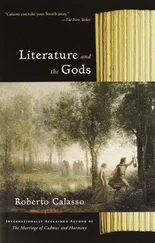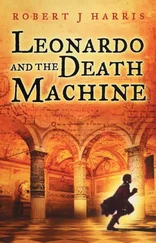The next morning he had only to write out the results. A wave of crystallization had taken place.
He described how a second wave of crystallization, guided by analogies to established mathematics, produced what he later named the “Theta-Fuchsian Series.” He left Caen, where he was living, to go on a geologic excursion. The changes of travel made him forget mathematics. He was about to enter a bus, and at the moment when he put his foot on the step, the idea came to him, without anything in his former thoughts having paved the way for it, that the transformations he had used to define the Fuchsian functions were identical with those of non-Euclidian geometry. He didn’t verify the idea, he said, he just went on with a conversation on the bus; but he felt a perfect certainty. Later he verified the result at his leisure.
A later discovery occurred while he was walking by a seaside bluff. It came to him with just the same characteristics of brevity, suddenness and immediate certainty. Another major discovery occurred while he was walking down a street. Others eulogized this process as the mysterious workings of genius, but Poincare was not content with such a shallow explanation. He tried to fathom more deeply what had happened.
Mathematics, he said, isn’t merely a question of applying rules, any more than science. It doesn’t merely make the most combinations possible according to certain fixed laws. The combinations so obtained would he exceedingly numerous, useless and cumbersome. The true work of the inventor consists in choosing among these combinations so as to eliminate the useless ones, or rather, to avoid the trouble of making them, and the rules that must guide the choice are extremely fine and delicate. It’s almost impossible to state them precisely; they must be felt rather than formulated.
Poincare then hypothesized that this selection is made by what he called the “subliminal self”, an entity that corresponds exactly with what Phædrus called preintellectual awareness. The subliminal self, Poincare said, looks at a large number of solutions to a problem, but only the interesting ones break into the domain of consciousness. Mathematical solutions are selected by the subliminal self on the basis of “mathematical beauty”, of the harmony of numbers and forms, of geometric elegance. “This is a true esthetic feeling which all mathematicians know”, Poincare said, “but of which the profane are so ignorant as often to be tempted to smile.” But it is this harmony, this beauty, that is at the center of it all.
Poincare made it clear that he was not speaking of romantic beauty, the beauty of appearances which strikes the senses. He meant classic beauty, which comes from the harmonious order of the parts, and which a pure intelligence can grasp, which gives structure to romantic beauty and without which life would be only vague and fleeting, a dream from which one could not distinguish one’s dreams because there would be no basis for making the distinction. It is the quest of this special classic beauty, the sense of harmony of the cosmos, which makes us choose the facts most fitting to contribute to this harmony. It is not the facts but the relation of things that results in the universal harmony that is the sole objective reality.
What guarantees the objectivity of the world in which we live is that this world is common to us with other thinking beings. Through the communications that we have with other men we receive from them ready-made harmonious reasonings. We know that these reasonings do not come from us and at the same time we recognize in them, because of their harmony, the work of reasonable beings like ourselves. And as these reasonings appear to fit the world of our sensations, we think we may infer that these reasonable beings have seen the same thing as we; thus it is that we know we haven’t been dreaming. It is this harmony, this quality if you will, that is the sole basis for the only reality we can ever know.
Poincare’s contemporaries refused to acknowledge that facts are preselected because they thought that to do so would destroy the validity of scientific method. They presumed that “preselected facts” meant that truth is “whatever you like” and called his ideas conventionalism. They vigorously ignored the truth that their own “principle of objectivity” is not itself an observable fact… and therefore by their own criteria should be put in a state of suspended animation.
They felt they had to do this because if they didn’t, the entire philosophic underpinning of science would collapse. Poincare didn’t offer any resolutions of this quandary. He didn’t go far enough into the metaphysical implications of what he was saying to arrive at the solution. What he neglected to say was that the selection of facts before you “observe” them is “whatever you like” only in a dualistic, subject-object metaphysical system! When Quality enters the picture as a third metaphysical entity, the preselection of facts is no longer arbitrary. The preselection of facts is not based on subjective, capricious “whatever you like” but on Quality, which is reality itself. Thus the quandary vanishes.
It was as though Phædrus had been working on a puzzle of his own and because of lack of time had left one whole side unfinished.
Poincare had been working on a puzzle of his own. His judgment that the scientist selects facts, hypotheses and axioms on the basis of harmony, also left the rough serrated edge of a puzzle incomplete. To leave the impression in the scientific world that the source of all scientific reality is merely a subjective, capricious harmony is to solve problems of epistemology while leaving an unfinished edge at the border of metaphysics that makes the epistemology unacceptable.
But we know from Phædrus’ metaphysics that the harmony Poincare talked about is not subjective. It is the source of subjects and objects and exists in an anterior relationship to them. It is not capricious, it is the force that opposes capriciousness; the ordering principle of all scientific and mathematical thought which destroys capriciousness, and without which no scientific thought can proceed. What brought tears of recognition to my eyes was the discovery that these unfinished edges match perfectly in a kind of harmony that both Phædrus and Poincare talked about, to produce a complete structure of thought capable of uniting the separate languages of Science and Art into one.
On either side of us the mountains have become steep, to form a long narrow valley that winds into Missoula. This head wind has worn me down and I’m tired now. Chris taps me and points to a high hill with a large painted M on it. I nod. This morning we passed one like it as we left Bozeman. A fragment occurs to me that the freshmen in each school go up there and paint the M each year.
At a station where we fill with gas, a man with a trailer carrying two Appaloosa horses strikes up a conversation. Most horse people are antimotorcycle, it seems, but this one is not, and he asks a lot of questions, which I answer. Chris keeps asking to go up to the M, but I can see from here it’s a steep, rutty, scrambler road. With our highway machine and heavy load I don’t want to fool with it. We stretch our legs for a while, walk around and then somewhat wearily head out of Missoula toward Lolo Pass.
A recollection appears that not many years ago this road was all dirt with twists and turns around every rock and fold in the mountains. Now it’s paved and the turns are very broad. All the traffic we were in has evidently headed north for Kalispell or Coeur D’Alene, for there’s hardly any now. We’re headed southwest, have picked up a tail wind, and we feel better because of it. The road starts to wind up into the pass.
All traces of the East are gone now, at least in my imagination. All the rain here comes from Pacific winds and all the rivers and streams here return it to the Pacific. We should be at the ocean in two or three days.
Читать дальше












